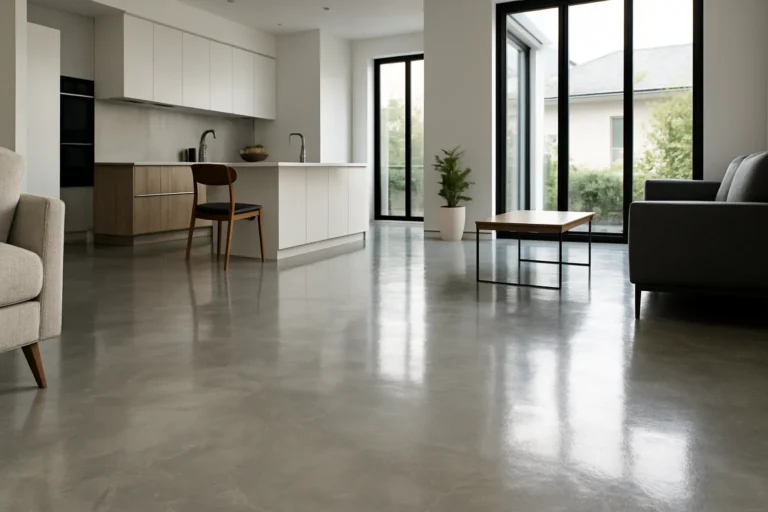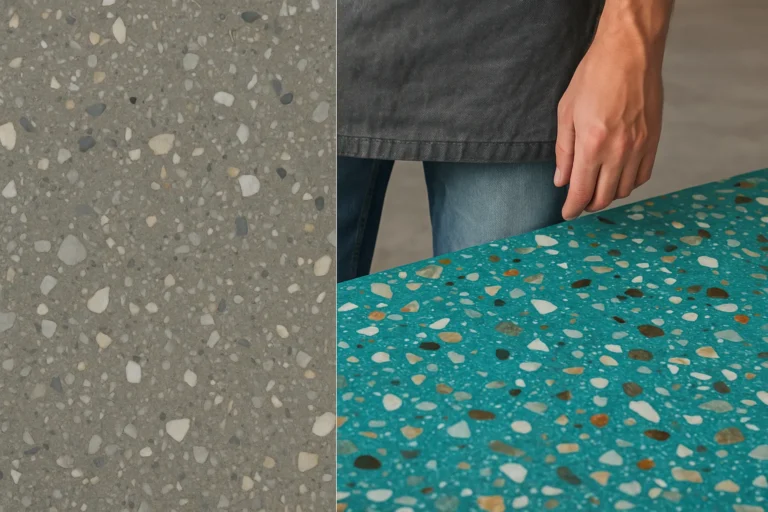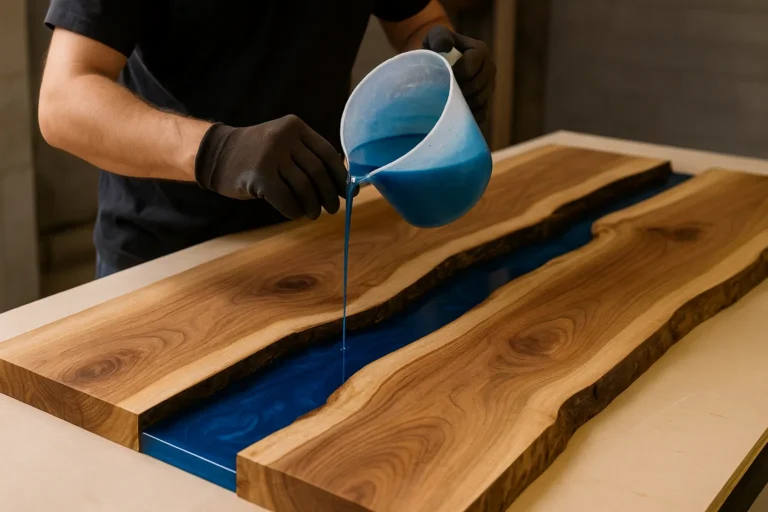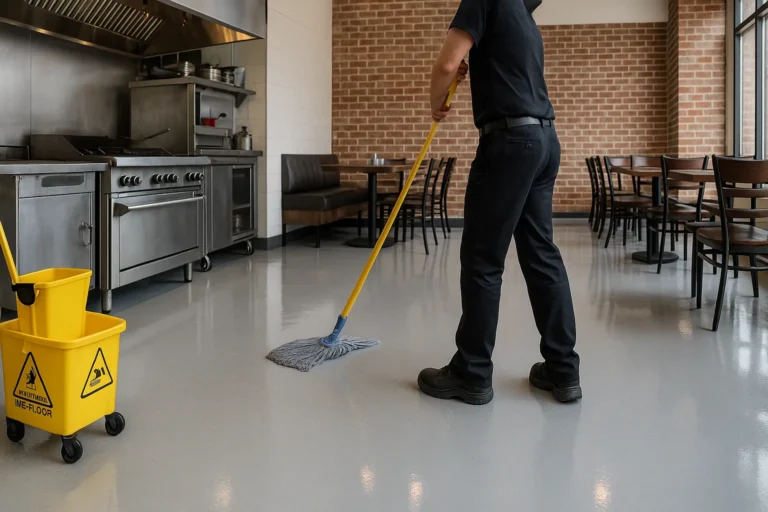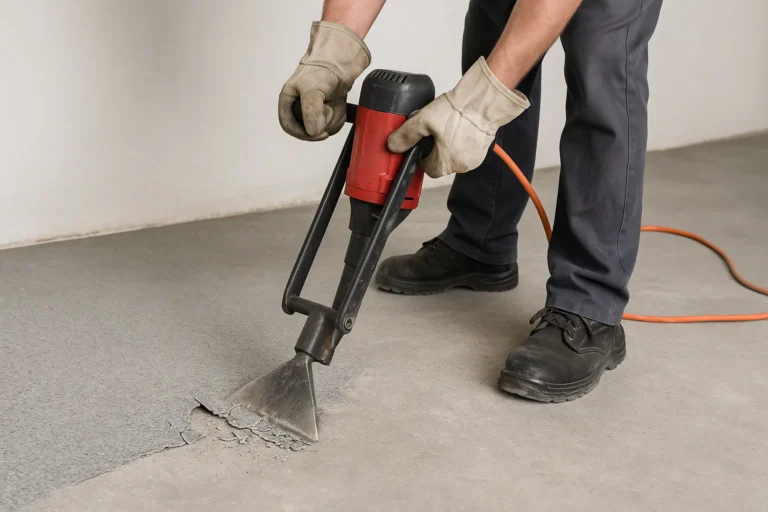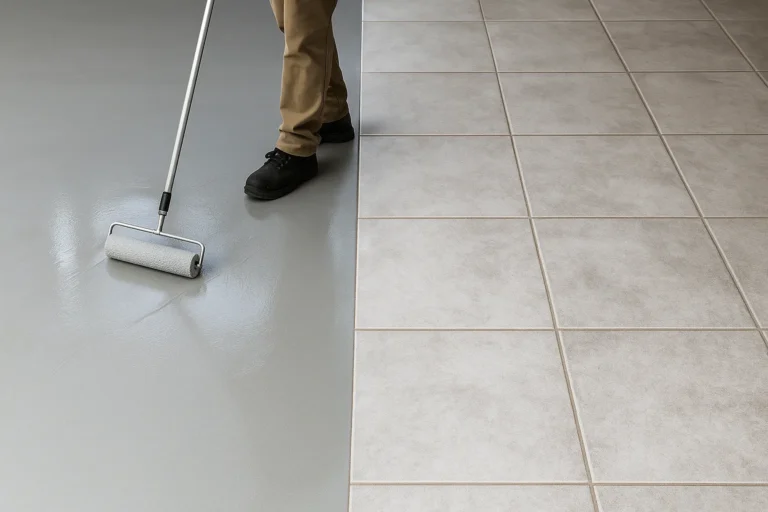The Rise of Minimalist Architecture in Cultural Spaces
In recent years, the world of cultural institutions has witnessed a significant shift towards minimalist architecture. This trend has revolutionized the way we experience art and history, creating spaces that are both visually striking and functionally efficient.
Seamless Wall Finishes for Modern Galleries
Seamless wall finishes have become a hallmark of modern gallery design. These smooth, uninterrupted surfaces provide a clean backdrop for artwork, allowing pieces to stand out without visual distractions. The absence of joints or seams creates an illusion of infinite space, enhancing the overall aesthetic appeal of the gallery.
Microcement Applications in Museum Design
Microcement has emerged as a popular choice for museum interiors due to its versatility and sleek appearance. This innovative material can be applied to walls, floors, and even ceilings, creating a cohesive and contemporary look throughout the space. Its ability to be tinted in various colors allows for customization to suit different exhibition themes.
Enhancing Visitor Experience through Sleek Interiors
The adoption of minimalist design principles in cultural spaces has significantly improved visitor experiences. Sleek interiors with seamless finishes create a sense of calm and focus, allowing visitors to immerse themselves fully in the exhibits without visual clutter or distractions.
- Benefits of minimalist design in cultural spaces:
- Improved focus on exhibits
- Enhanced spatial perception
- Reduced visual fatigue
- Increased accessibility for all visitors
Innovative Materials Transforming Cultural Institution Design
The evolution of materials used in cultural institution design has played a crucial role in shaping modern museum and gallery spaces. Innovative solutions like microcement have opened up new possibilities for creating stunning, functional interiors.
Microcement as a Versatile Flooring Solution
Microcement flooring has gained popularity in cultural institutions due to its durability and aesthetic appeal. This seamless flooring option can withstand heavy foot traffic while maintaining its sleek appearance. Its versatility allows for various finishes, from matte to high-gloss, catering to different design preferences.
Integrating Seamless Finishes with Lighting Design
The integration of seamless finishes with lighting design has revolutionized the way artworks are displayed. Smooth surfaces reflect light more evenly, reducing glare and shadows that can interfere with the viewing experience. This synergy between materials and lighting creates an optimal environment for showcasing exhibits.
Durability and Maintenance of Microcement Surfaces
One of the key advantages of microcement surfaces is their durability and ease of maintenance. These factors are crucial for cultural institutions that experience high visitor traffic and require frequent cleaning.
|
Characteristic |
Microcement |
Traditional Materials |
|
Durability |
High |
Varies |
|
Maintenance |
Low |
Medium to High |
|
Aesthetics |
Seamless |
Varied |
|
Customization |
High |
Limited |
Creating Liminal Spaces in Museums and Galleries
The concept of liminal spaces has gained traction in museum and gallery design, blurring the boundaries between different areas and creating a more fluid visitor experience.
The Psychology of Minimalist Interiors
Minimalist interiors have a profound psychological impact on visitors. The absence of visual clutter allows for better focus and contemplation, enhancing the overall museum experience. This design approach can evoke a sense of calm and introspection, encouraging deeper engagement with the exhibits.
Balancing Aesthetics and Functionality in Exhibition Spaces
Achieving the right balance between aesthetics and functionality is crucial in exhibition spaces. While seamless finishes and minimalist design contribute to the visual appeal, it’s essential to ensure that these elements don’t compromise the practical aspects of displaying and preserving artworks.
Sustainable Practices in Cultural Institution Design
Sustainability has become a critical consideration in the design and operation of cultural institutions. The use of eco-friendly materials and energy-efficient systems is now a priority for many museums and galleries.
Eco-friendly Microcement Solutions
Microcement offers several environmental benefits compared to traditional building materials. Its thin application reduces material usage, and many microcement products are formulated with low-VOC (Volatile Organic Compounds) content, contributing to better indoor air quality.
Energy Efficiency in Museum Interiors
The design of museum interiors plays a significant role in energy efficiency. Seamless wall finishes can contribute to better insulation, reducing heating and cooling costs. Additionally, the reflective properties of smooth surfaces can enhance the effectiveness of lighting systems, potentially lowering energy consumption.
Longevity and Lifecycle Considerations
When designing cultural institutions, it’s essential to consider the longevity and lifecycle of materials used. Microcement’s durability and low maintenance requirements make it a sustainable choice for long-term use in high-traffic areas.
- Sustainability factors in cultural institution design:
- Material sourcing and production
- Energy efficiency
- Indoor air quality
- Maintenance and longevity
- Waste reduction during construction and renovation
Adapting Historical Buildings for Modern Gallery Spaces
The challenge of adapting historical buildings for use as modern gallery spaces has led to innovative design solutions that blend old and new elements seamlessly.
Preserving Architectural Heritage with Microcement
Microcement’s versatility makes it an ideal material for renovating historical buildings while preserving their architectural heritage. Its thin application allows for the retention of original architectural details while providing a contemporary finish.
Blending Old and New in Cultural Institutions
The juxtaposition of historical architecture with modern finishes creates a unique aesthetic that appeals to many visitors. This blend of old and new can enhance the overall experience, providing context for both historical and contemporary exhibits.
Challenges and Solutions in Renovation Projects
Renovating historical buildings for use as modern galleries presents various challenges, from structural issues to compliance with current building codes. However, innovative materials like microcement offer solutions that can address these challenges while maintaining the building’s character.
|
Challenge |
Solution |
|
Uneven surfaces |
Microcement’s thin application can level out imperfections |
|
Moisture issues |
Waterproof microcement formulations provide protection |
|
Preserving details |
Careful application techniques allow for retention of architectural elements |
|
Modern amenities |
Seamless integration of technology and services |
Acoustic Considerations in Gallery and Museum Design
Acoustic design plays a crucial role in creating an immersive and comfortable environment for museum and gallery visitors. Proper acoustic treatment can enhance the overall experience and support various types of exhibitions.
Sound-absorbing Properties of Microcement
While microcement is known for its visual appeal, it also offers sound-absorbing properties that can contribute to better acoustics in gallery spaces. The material’s density and composition help to reduce echo and reverberation, creating a more pleasant auditory environment.
Creating Immersive Audio Experiences in Exhibitions
Many modern exhibitions incorporate audio elements to enhance visitor engagement. The acoustic properties of microcement surfaces can support these immersive experiences by providing a balanced sound environment that doesn’t interfere with the intended audio presentation.
Balancing Acoustics and Aesthetics in Cultural Spaces
Achieving the right balance between acoustic performance and visual aesthetics is essential in cultural spaces. Microcement’s ability to be molded into various forms allows for the integration of acoustic features without compromising the overall design aesthetic.
- Acoustic design considerations for cultural spaces:
- Sound absorption coefficients of materials
- Room geometry and volume
- Integration of acoustic treatments
- Balance between reflection and absorption
- Support for multimedia installations
Lighting Design for Microcement Galleries
Effective lighting design is crucial in microcement galleries to showcase artworks and create the desired ambiance. The interplay between light and seamless surfaces can dramatically impact the visitor experience.
Enhancing Visual Appeal with Strategic Illumination
Strategic lighting can accentuate the smooth texture of microcement surfaces, creating subtle variations in tone and depth. This interplay between light and surface can add visual interest to the space without detracting from the exhibited works.
Integrating Natural and Artificial Light Sources
A well-designed gallery space often combines natural and artificial light sources. Microcement’s reflective properties can help distribute natural light more evenly throughout the space, while artificial lighting can be used to highlight specific areas or artworks.
Showcasing Artworks on Seamless Surfaces
The seamless nature of microcement surfaces provides an ideal backdrop for showcasing artworks. Proper lighting techniques can enhance the contrast between the artwork and the surrounding walls, creating a striking visual impact.
|
Lighting Technique |
Effect on Microcement Surfaces |
Impact on Artwork Display |
|
Grazing light |
Highlights texture |
Creates depth and shadow |
|
Diffused light |
Even illumination |
Reduces glare |
|
Accent lighting |
Focal points |
Draws attention to pieces |
|
Color temperature |
Affects perceived wall color |
Influences artwork colors |
Accessibility and Inclusivity in Cultural Institution Design
Designing cultural institutions with accessibility and inclusivity in mind is essential to ensure that all visitors can enjoy and engage with the exhibits. Microcement and seamless finishes can contribute to creating more accessible spaces.
Creating Barrier-free Environments with Microcement
Microcement’s ability to create smooth, seamless surfaces is particularly beneficial for accessibility. The absence of thresholds or level changes between different flooring materials reduces tripping hazards and makes navigation easier for visitors with mobility challenges.
Tactile Experiences in Museum Interiors
While smooth surfaces are generally preferred for accessibility, incorporating tactile elements can enhance the experience for visually impaired visitors. Microcement can be textured or combined with other materials to create tactile wayfinding elements or interactive exhibits.
Designing for Diverse Visitor Needs
Inclusive design considers the needs of all potential visitors, including those with sensory, cognitive, or physical disabilities. The versatility of microcement allows for the creation of spaces that can accommodate a wide range of needs without compromising on aesthetics.
- Accessibility features in cultural institution design:
- Non-slip flooring options
- Contrasting colors for wayfinding
- Adequate lighting for visibility
- Flexible spaces for various needs
- Integration of assistive technologies
Temperature and Humidity Control in Microcement Galleries
Maintaining appropriate temperature and humidity levels is crucial in galleries and museums to preserve artworks and ensure visitor comfort. Microcement surfaces can play a role in supporting climate control efforts.
Preserving Artworks with Climate-Responsive Design
Microcement’s thermal mass properties can contribute to more stable indoor temperatures, which is beneficial for artwork preservation. The material’s ability to absorb and release heat slowly helps to minimize sudden temperature fluctuations that can be harmful to sensitive exhibits.
Integrating HVAC Systems with Seamless Finishes
The seamless nature of microcement finishes allows for better integration of HVAC systems. Vents and climate control elements can be incorporated more discreetly, maintaining the clean aesthetic of the gallery space while ensuring efficient air circulation.
Microcement’s Role in Thermal Regulation
While not a primary insulator, microcement can contribute to the overall thermal performance of a building. Its density and composition can help to reduce heat transfer, potentially improving energy efficiency in gallery spaces.
- Factors affecting climate control in galleries:
- Building envelope performance
- HVAC system efficiency
- Material thermal properties
- Lighting heat output
- Visitor traffic patterns
Curating Exhibitions for Minimalist Gallery Spaces
Curating exhibitions for minimalist gallery spaces requires a thoughtful approach to maximize the impact of artworks within a clean, uncluttered environment.
Maximizing Visual Impact in Uncluttered Environments
The simplicity of minimalist gallery spaces allows curators to create powerful visual statements with careful artwork placement. The absence of visual distractions enables visitors to focus more intently on each piece, potentially enhancing their appreciation and understanding.
Flexible Display Solutions for Seamless Interiors
Seamless microcement surfaces provide a versatile backdrop for various display methods. Modular and movable display systems can be easily integrated without compromising the overall aesthetic, allowing for flexible exhibition layouts. Microcement color selection Polished conference microcement is a smooth and shiny floor coating used in meeting rooms It makes the floor look fancy and is easy to clean for big gatherings
Upscale microcement aesthetics create a sleek and modern look for floors and walls This smooth finish gives spaces a high-end feel without using traditional materials Microcement countertops modernize kitchens by giving a sleek and smooth look to the cooking area These thin and durable surfaces come in many colors to match any kitchen style
The Future of Cultural Institution Design
As we look to the future, cultural institution design continues to evolve, incorporating new technologies and responding to changing visitor expectations.
Emerging Technologies in Museum Interiors
Advancements in technology are opening up new possibilities for interactive and immersive experiences in museums. Seamless microcement surfaces provide an ideal canvas for integrating technologies such as projection mapping and interactive displays.
Adapting to Changing Visitor Expectations
Modern visitors expect more engaging and personalized experiences from cultural institutions. The flexibility offered by minimalist designs and materials like microcement allows for easier adaptation to these changing expectations, enabling museums to update their spaces and exhibitions more frequently.
Innovative Applications of Microcement and Seamless Finishes
As the technology behind microcement continues to advance, we can expect to see even more innovative applications in cultural spaces. From self-cleaning surfaces to smart materials that respond to environmental conditions, the future of museum interiors is likely to be both beautiful and highly functional.
- Future trends in cultural institution design:
- Integration of virtual and augmented reality
- Sustainable and biophilic design elements
- Adaptive reuse of unconventional spaces
- Increased focus on community engagement
- Flexible, multi-purpose exhibition areas
In conclusion, the use of microcement and seamless wall finishes in cultural institution design represents a significant step forward in creating modern, flexible, and engaging spaces for art and cultural exhibitions. As exemplified by products from companies like Duraamen, these innovative materials offer a perfect blend of aesthetics, functionality, and sustainability, paving the way for the future of museum and gallery design.
FAQs
What are the maintenance requirements for microcement finishes in high-traffic cultural spaces?
Microcement finishes in high-traffic cultural spaces require relatively low maintenance compared to many traditional flooring and wall materials. Regular cleaning with pH-neutral cleaners and occasional dry mopping or vacuuming is usually sufficient to maintain the surface’s appearance. For added protection, especially in areas with heavy foot traffic, applying a sealant can help preserve the finish and make cleaning easier. It’s important to address any scratches or damages promptly to prevent further deterioration. While microcement is durable, periodic professional maintenance may be necessary to refresh the surface and ensure its longevity in busy cultural institutions.
How does seamless wall finish impact the visitor experience in galleries?
Seamless wall finishes significantly enhance the visitor experience in galleries by creating a distraction-free environment that allows artworks to take center stage. The absence of visible joints or textures on the walls helps to minimize visual noise, enabling visitors to focus more intently on the exhibited pieces. This clean backdrop also contributes to a sense of spaciousness and flow within the gallery, encouraging visitors to move through the space more naturally. Moreover, seamless finishes can improve the overall lighting conditions by reducing shadows and providing even light distribution, further enhancing the viewing experience.
What are the benefits of using microcement in museum interiors?
Microcement offers numerous benefits for museum interiors, making it an increasingly popular choice among designers and curators. Its seamless finish creates a clean, modern aesthetic that complements a wide range of artistic styles. The material’s durability and resistance to wear make it ideal for high-traffic areas, ensuring that the space maintains its appearance over time. Additionally, microcement’s versatility allows for customization in color and texture, enabling designers to create unique environments that enhance the visitor experience.
